Modulation of the cGAS-STING DNA sensing pathway by gammaherpesviruses
- PMID: 26199418
- PMCID: PMC4534226
- DOI: 10.1073/pnas.1503831112
Modulation of the cGAS-STING DNA sensing pathway by gammaherpesviruses
Abstract
Infection of cells with DNA viruses triggers innate immune responses mediated by DNA sensors. cGMP-AMP synthase (cGAS) is a key DNA sensor that produces the cyclic dinucleotide cGMP-AMP (cGAMP) upon activation, which binds to and activates stimulator of interferon genes (STING), leading to IFN production and an antiviral response. Kaposi's sarcoma-associated herpesvirus (KSHV) is a DNA virus that is linked to several human malignancies. We report that KSHV infection activates the cGAS-STING pathway, and that cGAS and STING also play an important role in regulating KSHV reactivation from latency. We screened KSHV proteins for their ability to inhibit this pathway and identified six viral proteins that block IFN-β activation through this pathway. This study is the first report identifying multiple viral proteins encoded by a human DNA virus that inhibit the cGAS-STING DNA sensing pathway. One such protein, viral interferon regulatory factor 1 (vIRF1), targets STING by preventing it from interacting with TANK binding kinase 1 (TBK1), thereby inhibiting STING's phosphorylation and concomitant activation, resulting in an inhibition of the DNA sensing pathway. Our data provide a unique mechanism for the negative regulation of STING-mediated DNA sensing. Moreover, the depletion of vIRF1 in the context of KSHV infection prevented efficient viral reactivation and replication, and increased the host IFN response to KSHV. The vIRF1-expressing cells also inhibited IFN-β production following infection with DNA pathogens. Collectively, our results demonstrate that gammaherpesviruses encode inhibitors that block cGAS-STING-mediated antiviral immunity, and that modulation of this pathway is important for viral transmission and the lifelong persistence of herpesviruses in the human population.
Keywords: KSHV; STING; cGAS; innate immunity; vIRF1.
Conflict of interest statement
The authors declare no conflict of interest.
Figures

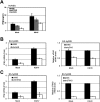


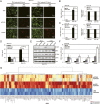


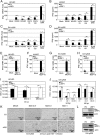
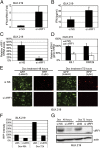
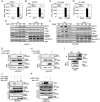


References
-
- Cesarman E, Chang Y, Moore PS, Said JW, Knowles DM. Kaposi’s sarcoma-associated herpesvirus-like DNA sequences in AIDS-related body-cavity-based lymphomas. N Engl J Med. 1995;332(18):1186–1191. - PubMed
-
- Chang Y, et al. Identification of herpesvirus-like DNA sequences in AIDS-associated Kaposi’s sarcoma. Science. 1994;266(5192):1865–1869. - PubMed
Publication types
MeSH terms
Substances
Grants and funding
- P01 CA019014/CA/NCI NIH HHS/United States
- R01 CA160556/CA/NCI NIH HHS/United States
- AI107810/AI/NIAID NIH HHS/United States
- CA096500/CA/NCI NIH HHS/United States
- CA160556/CA/NCI NIH HHS/United States
- U19 AI109965/AI/NIAID NIH HHS/United States
- DE018281/DE/NIDCR NIH HHS/United States
- AI109965/AI/NIAID NIH HHS/United States
- CA136367/CA/NCI NIH HHS/United States
- CA019014/CA/NCI NIH HHS/United States
- R01 CA194404/CA/NCI NIH HHS/United States
- R01 CA136367/CA/NCI NIH HHS/United States
- R01 AI079336/AI/NIAID NIH HHS/United States
- R01 DE023946/DE/NIDCR NIH HHS/United States
- DE023946/DE/NIDCR NIH HHS/United States
- U19 AI107810/AI/NIAID NIH HHS/United States
- R01 DE018281/DE/NIDCR NIH HHS/United States
- R01 CA096500/CA/NCI NIH HHS/United States
LinkOut - more resources
Full Text Sources
Other Literature Sources
Research Materials
Miscellaneous

